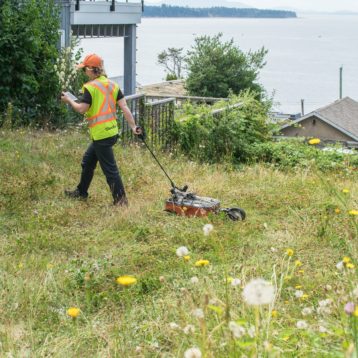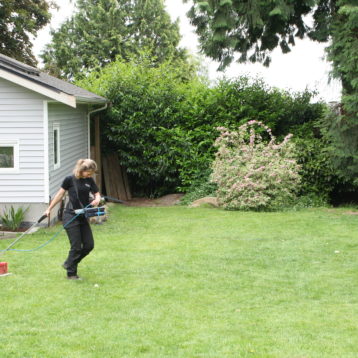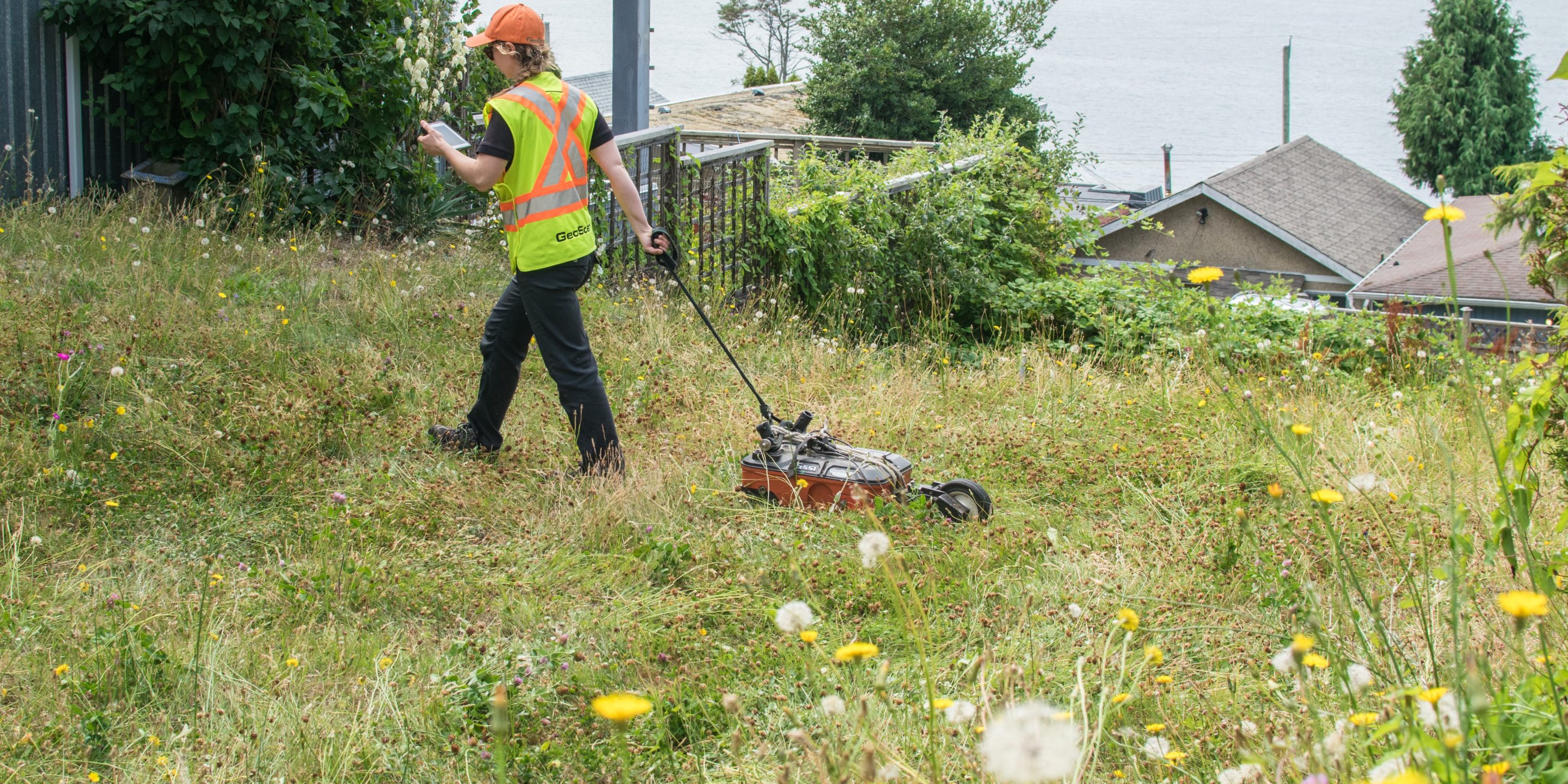
A property management company requested an oil tank scan to confirm the suspicion of an existing underground oil storage tank (UST).
The property had an apartment building on it and the client needed to know if a UST was present on the site in order to meet conditions for sale.
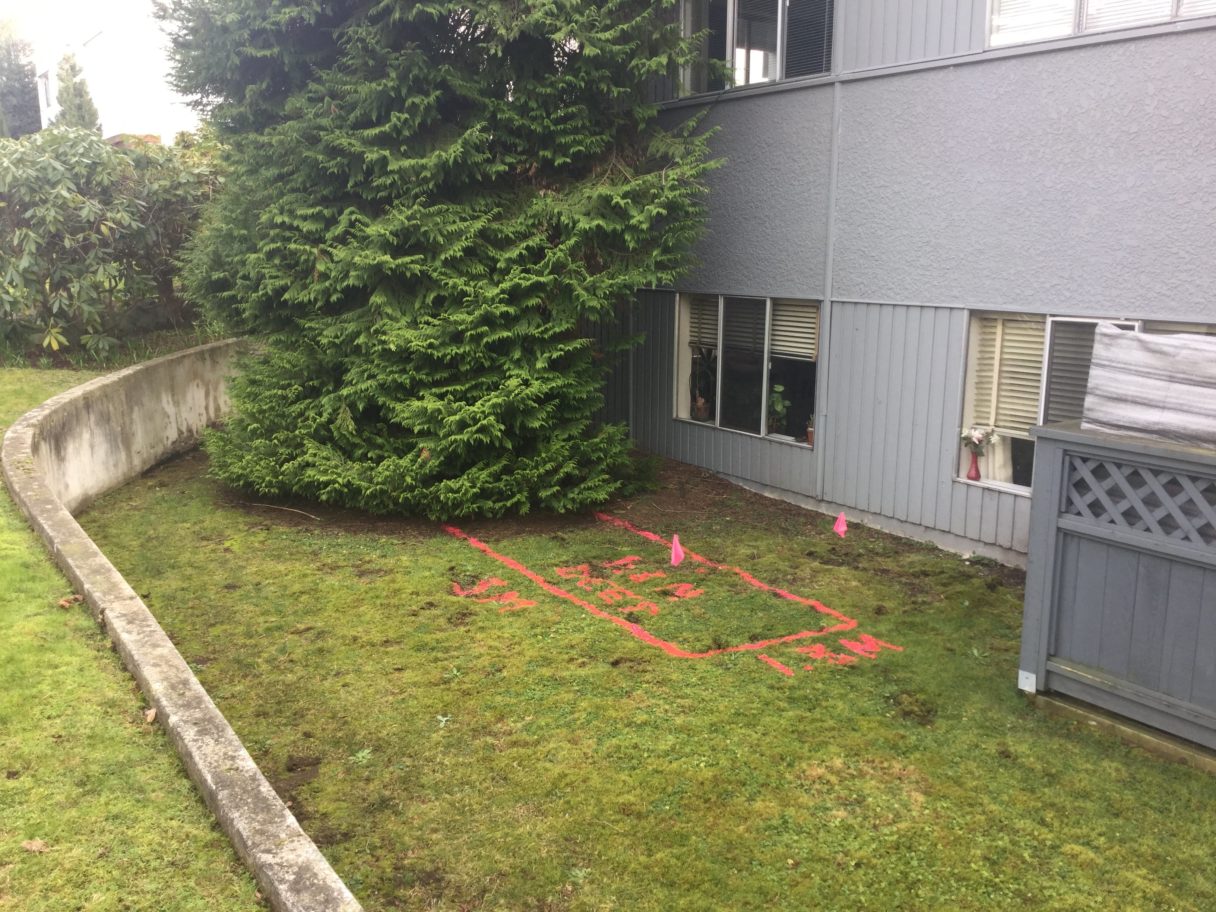
A site walk-around was conducted outlining any visual evidence for the presence of an underground oil storage tank (UST). A vent pipe, which is commonly connected to UST’s, was located in the northeast corner of the building, partially hidden behind a cedar tree. The furnace room inside the apartment building was checked and had no visible oil tank related evidence.
The ferromagnetic locator was utilised in an attempt to find metallic anomalies on the property. A large metallic signature was identified in the northeast corner of the property.
Ground Penetrating Radar (GPR) was utilised next to confirm the presence of a UST. The GPR signal managed to achieve around 3 meters penetration into the subsurface.
Using the GPR, a large reflection could be seen on screen. When running multiple passes over the metallic signature the tip of the hyperboles measured in depth from 1.8 meters to 2.2 meters. A lengthwise pass confirmed these measurements; the GPR data showed an angled line indicating the angle and orientation of the UST.
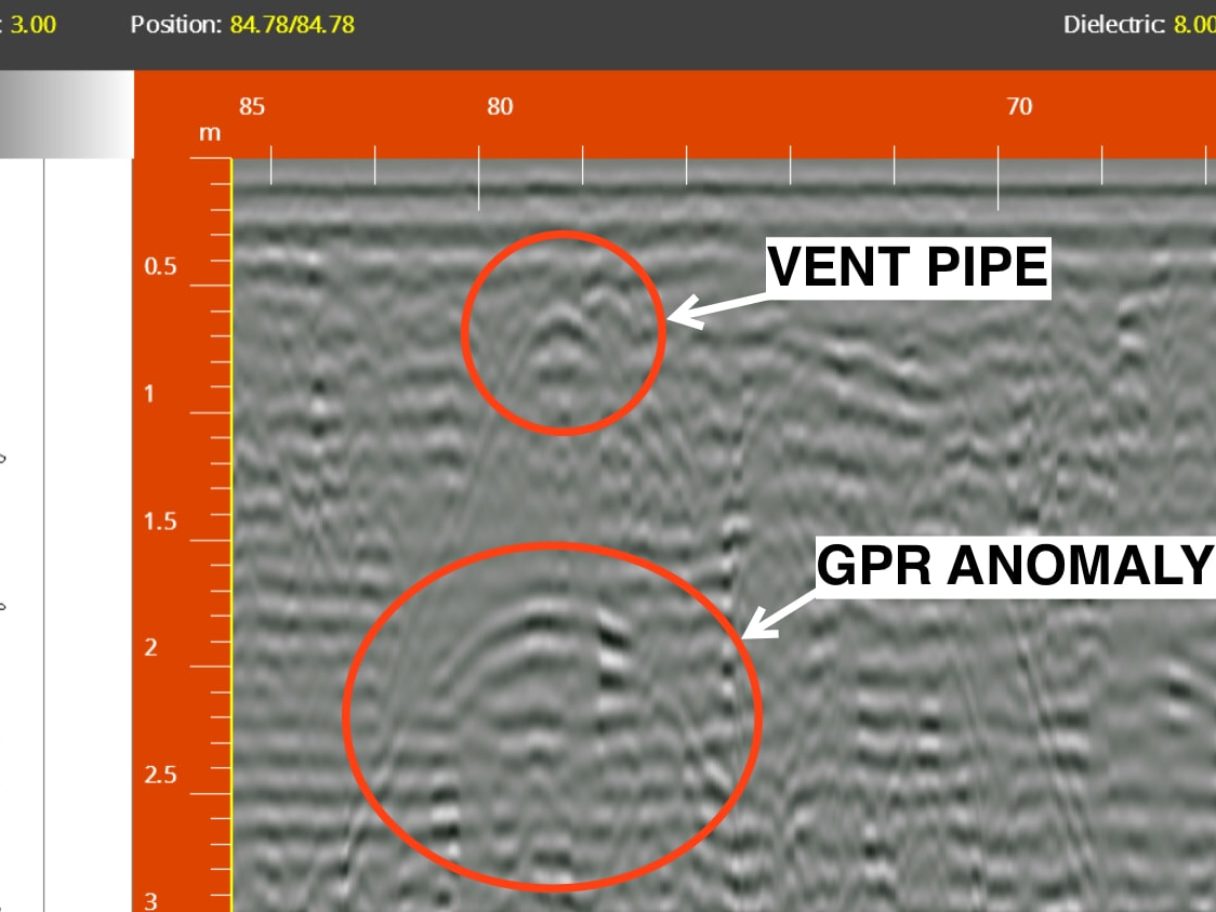
With the aid of the ferromagnetic locator and GPR the reflection was marked out with paint and flagging tape.
The use of GPR technology was paramount in locating the UST. Although the ferromagnetic locator was effective at finding a metallic signature, the vent pipe running over top the UST at 0.5M partially hid the second metallic signature below it.
The use of GPR allowed for the discovery of the depth, orientation, and size of the UST. The nearby cedar tree also likely has a vast root system running through the area. Without GPR confirmation, there would be added risk with exposing the metallic anomaly. The day-lighting process would include digging blindly through the cedar tree’s root system and the existence, orientation, size, and depth of the UST would be unknown. The use of GPR technology in the location and identification of UST is necessary. The use of a ferromagnetic locator can only determine the location and rough depth of metal in the ground which is further complicated if other metal is occluding it.
